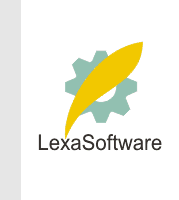Filmscanners mailing list archive (filmscanners@halftone.co.uk)
[Date Prev][Date Next][Thread Prev][Thread Next][Date Index][Thread Index]
[filmscanners] Re: Scanning old slides
Jack Phipps wrote:
> I agree that using a scanner with Digital ICE is a good idea. ;)
No personal bias there, eh? ;-)
Weren't the earlier models versions of dICE less tolerant of the
Kodachrome cyan dyes? I seem to recall Nikon users of earlier versions
with diCE having difficulties with Kodachrome which were resolved with
newer version of the scanner which had improved dICE. Or were these
earlier reports overly critical?
Art
>
> I would use the Digital ICE software from the manufacturer. Here is my
> experience with Digital ICE and Kodachrome. The first thing Digital ICE does
> is create a defect map by using an infrared scan in the film scanner. That
> is why it is only available with certain scanners, they must have IR
> capabilities. The problem with Kodachrome is that SOMETIMES there is a
> problem with when scanning the cyan layer with IR. The defect map creation
> is sometimes confused by the cyan layer, showing defects where there are
> none. With other film types, this is not a problem.
>
> Next, Digital ICE uses the defect map to repair parts of the scan where film
> defects, dust, dirt, fingerprints, scratches, etc. affect image quality.
> Where the defect map is inaccurate around high densities in the cyan layer,
> there is a loss of detail.
>
> However, with most of the Kodachrome scans I make, it is difficult or
> impossible to see this loss of detail. If there is a problem, I either scan
> the image without Digital ICE or if it has a lot of surface defects I scan
> it once with Digital ICE on and again with it off. I then restore the lost
> detail by combining the two images (on different layers) with a mask,
> recovering the detail where it is important and taking advantage of the
> automatic correction everywhere else.
>
> Good luck with your project.
>
> Jack Phipps
> Applied Science Fiction
>
----------------------------------------------------------------------------------------
Unsubscribe by mail to listserver@halftone.co.uk, with 'unsubscribe
filmscanners'
or 'unsubscribe filmscanners_digest' (as appropriate) in the message title or
body
|

